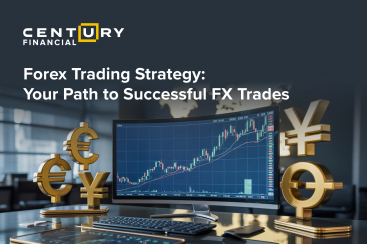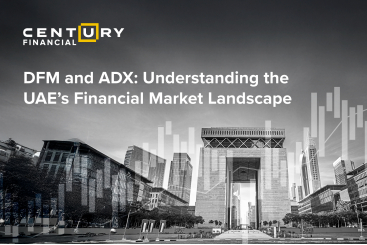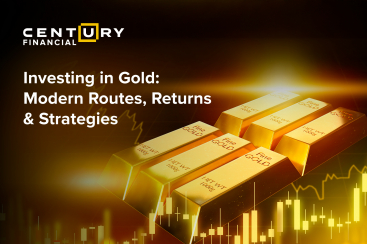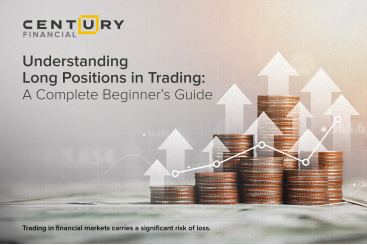Wednesday, October 12, 2022
All you need to know about Algorithmic trading
تم إعداد هذا المنشور من قبل سنشري للاستشارات

.jpg)
Let’s go a decade back, and as a trader, you would have hoped your instructions were automatically met, from commands like pricing to timing or any other metric. Fortunately, in today’s fast-paced world, technology has ensured you can do all this with just a command. Welcome, algorithmic trading.
In the world of algorithmic trading or algo-trading, a computer program receives a command that follows those defined sets of instructions to place a trade. So, how is this helpful? Well, it does at a speed and frequency that a human trader cannot possibly do. The defined sets of instructions are based on




And aside from the profits a trader is likely to earn through this trading platform, it also ensures markets are more liquid and makes trading more systematic by taking human emotions away from trading activities.
.jpg)
So how does it work in the real world?
Consider this, on a typical trading day, you pass on instructions to buy 100 shares of a particular stock when its 100-day moving average goes beyond the 200-day moving average and vice-versa. By following these instructions, the computer program will monitor the stock price and buy or sell a stock when these conditions are met. All this is done automatically, and a trader doesn’t need to manually monitor live prices and graphs.
Benefits of Algorithmic Trading








So how has the market reacted to algo-trading?
Positively. In 2019, the global algorithmic trading market was at $11.1 billion. By 2024, it is expected to touch 18.8 billion. With more investors seeking quick, reliable, and effective order execution, its demand has soared. Plus, lower transactional costs, heightened government regulations and the rising demand for market supervision have further propelled the growth of algo-trading.

Through algorithmic trading, traders find a more systematic approach to trading than methods based on trader intuition, instinct or even emotion. Algo-trading is used in many forms of trading and investment activities, including:



Algorithmic Trading Strategies
For any strategy to come in place in algo-trading, it requires identifying opportunities that are profitable both in earnings and cost reduction: Here are some strategies algo-traders use
Trend-Following Strategies: As the most common algo-trading strategy, it follows trends in moving averages, price level movements, channel breakouts, and other technical indicators. They are easy strategies to apply as they do not involve making any predictions or price forecasts.
Arbitrage Opportunities: The strategy involves buying a dual-listed stock at a lower price in one market and selling it at a higher price in another market. By implementing an algorithm to identify such price differentials, traders can automatically place orders efficiently for profitable opportunities.
Mean Reversion: Based on the idea that a stock's high and low prices are temporary and will eventually return to their mean value periodically. So, by identifying a price range and implementing an algorithm, trades can be placed automatically.
Volume-Weighted Average Price (VWAP): By using stock-specific historical volume profiles, the strategy is to break up a large order and release smaller chunks to the market.
There are many other strategies, like index fund rebalancing, time weighted average price, percentage of volume (POV), implementation shortfall, etc., that traders can use to stay one step ahead.
Algorithmic trading brings together computer software and financial markets closer by leveraging computing power to perform high-frequency trading.
لا تقدم شركة سنشري للإستشارات والتحليل المالي ش.ذ.م.م (الشركة) محتوى هذه المدونة، بما في ذلك أي أبحاث أو تحليلات أو آراء أو توقعات أو أي معلومات أخرى (يُشار إليها مجتمعةً باسم "المعلومات")، إلا لأغراض التسويق والتثقيف وإتاحة المعلومات العامة. ولا يُفسَّر ذلك على أنه نصيحة استثمارية أو توصية أو دعوة لشراء أو بيع أي أدوات مالية.
كما يجوز نشر هذه المعلومات عبر قنوات مختلفة، بما في ذلك موقع الشركة الإلكتروني، ومنصات الغير، والنشرات الإخبارية، والمواد التسويقية، ورسائل البريد الإلكتروني، ووسائل التواصل الاجتماعي، وتطبيقات المراسلة، والندوات الإلكترونية، وغيرها من وسائل التواصل. وبينما تسعى الشركة لضمان دقة المحتوى، فإنها لا تضمن اكتماله أو موثوقيته أو تحديثه في الوقت المناسب. وعليه، فأي قرارات تُتخذ بناءً على هذه المعلومات تكون على مسؤوليتك الشخصية. ولا تتحمل الشركة أي مسؤولية عن أي خسارة أو ضرر ناتج عن استخدامها.
ينطوي تداول المنتجات المالية على مخاطر كبيرة، بما لا يتناسب مع جميع المستثمرين. فيُرجى التأكد من وعيك التام بالمخاطر، وطلب الاستشارة المهنية المتخصصة إذا لزم الأمر.
يُرجى الاطلاع على بيان كشف المخاطر الشامل المتوفر على موقعنا الإلكتروني.
















